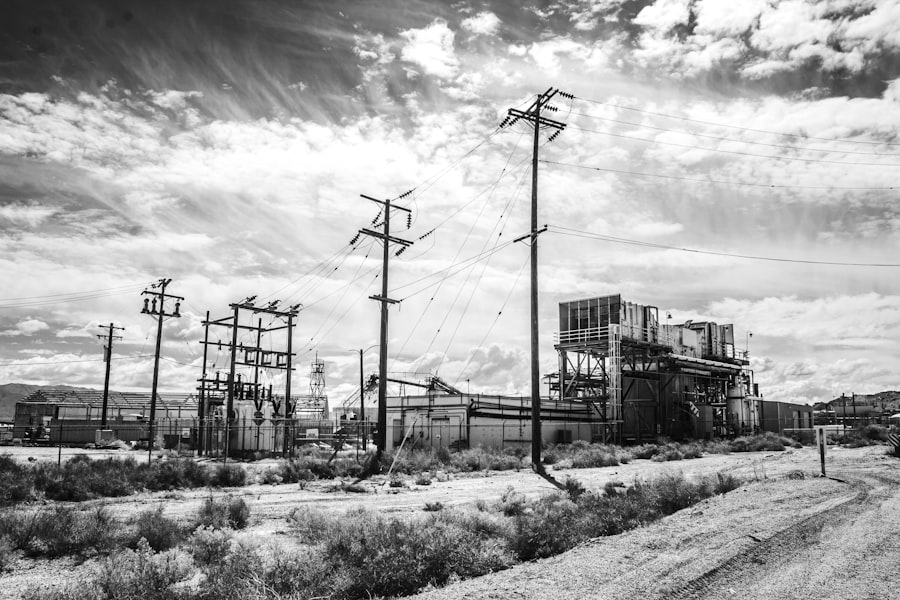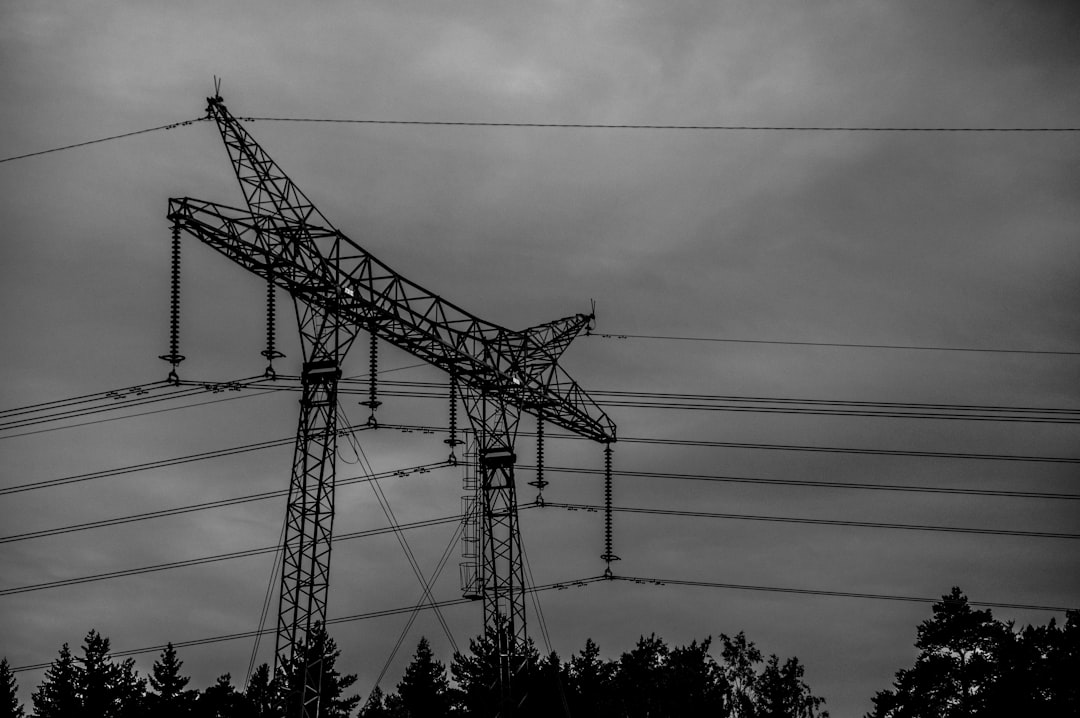In recent years, the utility sector has witnessed a significant increase in debt levels, raising concerns among investors, regulators, and consumers alike. This rise can be attributed to various factors, including the need for substantial capital investments in infrastructure, the transition to renewable energy sources, and the increasing costs associated with regulatory compliance. As utility companies strive to modernize their operations and meet the demands of a changing energy landscape, they often resort to borrowing, leading to a burgeoning debt load that can have far-reaching implications.
The trend of rising debt is not limited to a specific region or type of utility; it spans across electric, gas, and water companies globally. As these entities grapple with aging infrastructure and the need for technological upgrades, they find themselves in a precarious financial position. The reliance on debt financing can create a cycle where companies are forced to take on more debt to service existing obligations, potentially jeopardizing their long-term financial health.
This situation has prompted stakeholders to scrutinize the sustainability of utility company debt and its implications for future service delivery and pricing.
Key Takeaways
- Utility companies have increasingly accumulated significant hidden debt, impacting their financial stability.
- Hidden debt often arises from off-balance sheet financing and complex financial arrangements.
- Lack of transparency in debt reporting can lead to regulatory challenges and shareholder risks.
- Credit ratings and thorough financial statement analysis are crucial tools for uncovering concealed liabilities.
- Effective management strategies and stronger regulatory oversight are essential to mitigate the risks of hidden utility company debt.
Understanding the Impact of Hidden Debt
Hidden debt refers to financial obligations that are not immediately apparent on a company’s balance sheet. This can include off-balance sheet financing arrangements, contingent liabilities, or other forms of debt that may not be fully disclosed in financial statements. The impact of hidden debt on utility companies can be profound, as it obscures the true financial health of these organizations and can mislead investors and regulators about their risk profiles.
When hidden debt is not adequately accounted for, it can lead to a false sense of security among stakeholders. Investors may underestimate the financial risks associated with a utility company, leading to misguided investment decisions. Additionally, regulators may fail to recognize potential vulnerabilities in the utility’s financial structure, which could result in inadequate oversight and increased risk to consumers.
The lack of transparency surrounding hidden debt can ultimately undermine public trust in utility companies and their ability to provide reliable services.
How Utility Companies Hide Debt

Utility companies often employ various strategies to conceal debt from their financial statements. One common method is through the use of off-balance sheet financing, which allows companies to keep certain liabilities out of their reported debt figures. This can involve complex financial instruments such as special purpose entities (SPEs) or joint ventures that are structured in a way that keeps the associated debt from appearing on the balance sheet.
Another tactic involves the use of accounting practices that defer the recognition of certain liabilities. For instance, utility companies may capitalize costs related to infrastructure projects rather than expensing them immediately. While this approach can provide short-term financial relief, it can also mask the true extent of a company’s obligations.
By employing these methods, utility companies can present a more favorable financial picture than may actually exist, raising concerns about the integrity of their financial reporting.
The Consequences of Hidden Debt
| Consequence | Description | Impact on Economy | Example Metrics |
|---|---|---|---|
| Reduced Fiscal Transparency | Hidden debt obscures the true financial position of governments or organizations. | Leads to misinformed policy decisions and reduced investor confidence. | Percentage of off-balance sheet liabilities, number of undisclosed loans |
| Increased Borrowing Costs | When hidden debt is revealed, lenders may demand higher interest rates due to perceived risk. | Raises the cost of capital and strains public budgets. | Interest rate spread increase, credit rating downgrades |
| Fiscal Instability | Unexpected debt obligations can lead to budget deficits and fiscal crises. | May result in austerity measures or bailout requirements. | Debt-to-GDP ratio spikes, budget deficit percentage |
| Loss of Public Trust | Concealing debt damages credibility and trust in institutions. | Reduces public support for government policies and reforms. | Public opinion poll results, trust index scores |
| Economic Slowdown | Hidden debt can trigger financial crises that slow economic growth. | Leads to higher unemployment and lower investment. | GDP growth rate decline, unemployment rate increase |
The consequences of hidden debt can be severe for utility companies and their stakeholders. For one, it can lead to a misalignment between perceived and actual risk levels. Investors who are unaware of a company’s hidden liabilities may be more inclined to invest, only to face significant losses when the true financial situation comes to light.
This can result in volatility in stock prices and diminished investor confidence in the sector as a whole. Moreover, hidden debt can have regulatory implications. If regulators are not fully aware of a utility’s financial obligations, they may fail to implement necessary oversight measures or approve rate increases that reflect the true cost of service delivery.
This can create a situation where utilities struggle to maintain operations or invest in necessary infrastructure improvements, ultimately impacting service reliability for consumers. The long-term effects of hidden debt can ripple through the economy, affecting not only utility companies but also the communities they serve.
Regulatory Oversight of Utility Company Debt
Regulatory oversight plays a crucial role in ensuring that utility companies maintain transparency regarding their debt levels. Regulatory bodies are tasked with monitoring the financial health of these entities and ensuring that they operate within established guidelines. However, the effectiveness of this oversight can vary significantly depending on the jurisdiction and the specific regulatory framework in place.
In many cases, regulators rely on financial disclosures provided by utility companies to assess their risk profiles. If these disclosures do not accurately reflect hidden debt, regulators may be unable to take appropriate action to protect consumers and investors. This highlights the need for enhanced regulatory frameworks that require greater transparency and accountability from utility companies regarding their financial obligations.
By implementing stricter reporting requirements and conducting thorough audits, regulators can help mitigate the risks associated with hidden debt.
The Role of Shareholders in Uncovering Hidden Debt

Shareholders play an essential role in holding utility companies accountable for their financial practices, including the management of debt. As owners of the company, shareholders have a vested interest in understanding the true financial health of the organization and ensuring that it operates transparently. Engaged shareholders can advocate for better disclosure practices and push for changes that promote accountability within the company.
Institutional investors, in particular, have significant influence over corporate governance and can leverage their power to demand greater transparency regarding hidden debt. By actively participating in shareholder meetings and engaging with management on financial matters, shareholders can help uncover potential risks associated with undisclosed liabilities. Their involvement is crucial in fostering a culture of transparency within utility companies and ensuring that stakeholders are informed about the true state of affairs.
Analyzing the Financial Statements of Utility Companies
A thorough analysis of financial statements is essential for understanding the true financial position of utility companies. Investors and analysts must look beyond surface-level metrics such as revenue and net income to gain insights into a company’s debt levels and overall risk profile. Key indicators such as debt-to-equity ratios, interest coverage ratios, and cash flow statements provide valuable information about a company’s ability to manage its obligations.
Additionally, scrutinizing footnotes and disclosures within financial statements can reveal potential hidden liabilities that may not be immediately apparent. For instance, contingent liabilities related to legal disputes or environmental remediation efforts may be disclosed but not fully quantified in the main financial statements. By conducting a comprehensive analysis of these documents, stakeholders can better assess the risks associated with investing in or regulating utility companies.
Investigating Off-Balance Sheet Financing
Off-balance sheet financing is a critical area for investigation when assessing utility company debt. This type of financing allows companies to keep certain liabilities off their balance sheets, which can create an incomplete picture of their financial health. Investors and analysts must be vigilant in identifying these arrangements and understanding their implications for overall risk.
Common forms of off-balance sheet financing include operating leases, joint ventures, and special purpose entities (SPEs). Each of these structures can obscure the true extent of a company’s obligations and complicate efforts to evaluate its financial stability. By investigating these financing arrangements and understanding how they impact a company’s overall debt profile, stakeholders can make more informed decisions regarding investments and regulatory oversight.
Uncovering Debt through Credit Ratings
Credit ratings serve as an important tool for assessing the creditworthiness of utility companies and understanding their debt levels. Rating agencies evaluate various factors, including a company’s financial performance, market position, and management practices, to assign credit ratings that reflect its ability to meet its obligations. However, these ratings can also be influenced by hidden debt that may not be fully disclosed.
Investors should approach credit ratings with caution and consider them as one piece of a larger puzzle when evaluating utility companies. A high credit rating may provide reassurance about a company’s financial health, but it is essential to dig deeper into its financial statements and disclosures to uncover any potential hidden liabilities that could impact its creditworthiness.
The Importance of Transparency in Utility Company Debt
Transparency is paramount when it comes to managing utility company debt effectively. Clear communication regarding financial obligations fosters trust among investors, regulators, and consumers alike. When utility companies are open about their debt levels and any associated risks, stakeholders are better equipped to make informed decisions regarding investments and regulatory policies.
Moreover, transparency helps mitigate potential crises that may arise from undisclosed liabilities. By proactively disclosing information about debt levels and financing arrangements, utility companies can build credibility with stakeholders and reduce the likelihood of negative surprises down the line. In an industry where public trust is essential for long-term success, fostering transparency around debt management is crucial for maintaining positive relationships with all stakeholders involved.
Strategies for Managing and Mitigating Hidden Debt
To effectively manage and mitigate hidden debt, utility companies must adopt proactive strategies that prioritize transparency and accountability. One approach involves implementing robust internal controls that ensure accurate reporting of all financial obligations. Regular audits conducted by independent third parties can help identify any discrepancies or areas where hidden debt may exist.
Additionally, utility companies should consider adopting best practices for financial reporting that align with industry standards and regulatory requirements. This includes providing detailed disclosures regarding off-balance sheet financing arrangements and contingent liabilities in their financial statements. By embracing transparency as a core value within their organizational culture, utility companies can foster trust among stakeholders while effectively managing their debt levels.
Understanding the impact of hidden debt is crucial for assessing the true financial health of these organizations. By employing strategies that promote transparency and accountability while actively engaging shareholders in uncovering potential risks, stakeholders can work together to ensure that utility companies operate sustainably in an increasingly complex financial landscape.
Utility companies often employ various strategies to obscure their debt levels from the public eye, which can lead to a lack of transparency and accountability. For a deeper understanding of this issue, you can read more about financial practices in the utility sector in this related article:
